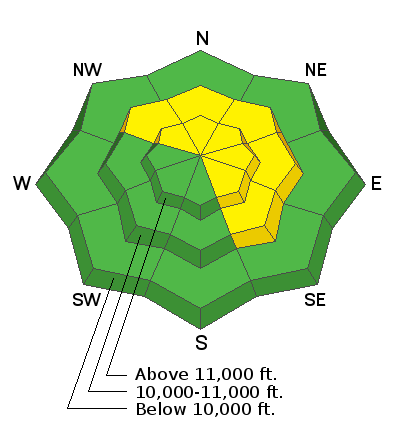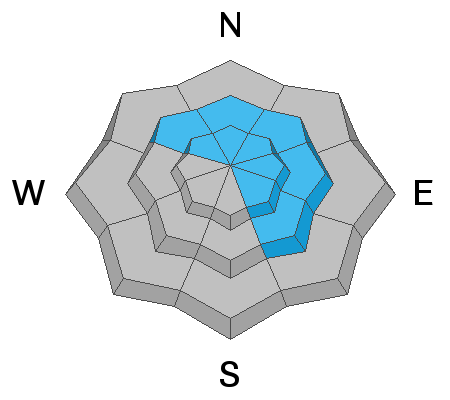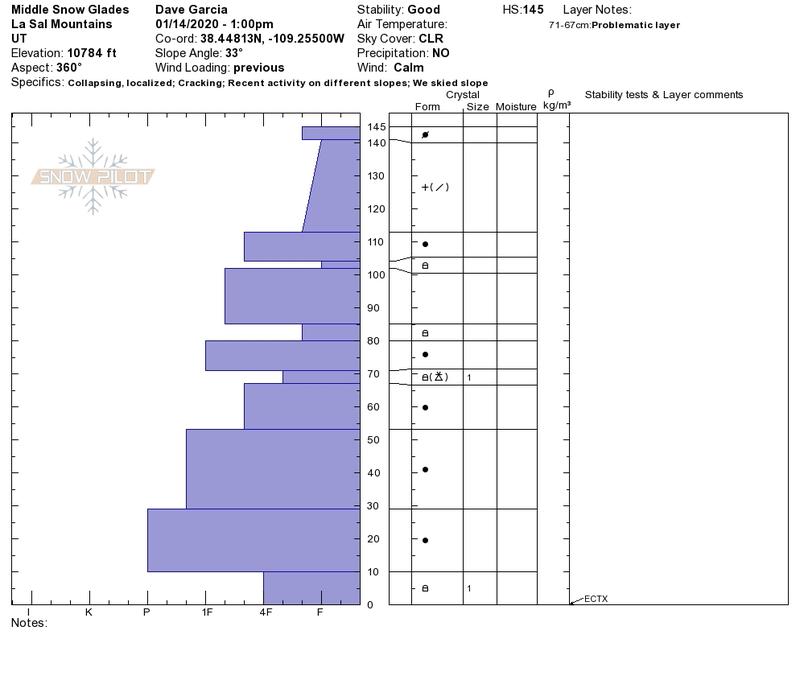Forecast for the Moab Area Mountains

Issued by Eric Trenbeath on
Saturday morning, January 18, 2020
Saturday morning, January 18, 2020
The avalanche danger is MODERATE at mid and upper elevations on steep, wind drifted slopes that face NW-N-SE. Look for shallow drifts in the most recent snow that could become problematic if more than about 6" deep. In some cases, fresh drifts may cover older wind slabs that formed earlier in the week. Suspect slopes that have a smooth, rounded appearance or that feel and sound hollow like a drum. Non-wind loaded slopes have generally LOW danger.

Low
Moderate
Considerable
High
Extreme
Learn how to read the forecast here









